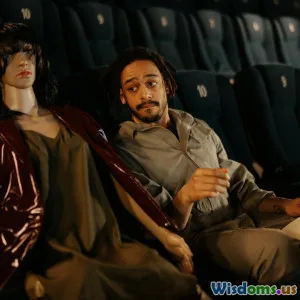
The Influence of Film on Cultural Perspectives
5 min read Explore how films shape and reflect cultural views, bridging gaps and inspiring change across societies. (0 Reviews)
The Influence of Film on Cultural Perspectives
Film is not merely a source of entertainment; it is a profound medium of storytelling that shapes our cultural perspectives and societal norms. From the early days of cinema to the blockbuster hits of today, films have served as both mirrors and molders of culture, reflecting societal values and often challenging them. This article explores the intricate relationship between film and culture, highlighting how cinema influences and is influenced by the diverse tapestry of human experience.
The Reflective Nature of Film
Films often reflect the cultural, social, and political climates of their time. For instance, the classic film Gone with the Wind provides a glimpse into the American South during the Civil War, showcasing the complexities of Southern identity while also sparking discussions about race and gender. Similarly, films like To Kill a Mockingbird and 12 Years a Slave have played pivotal roles in highlighting racial injustices, thereby shaping public discourse around civil rights.
Example: The Impact of Black Panther
Black Panther, released in 2018, is a prime example of how film can influence cultural perspectives. Not only did it break box office records, but it also provided a nuanced representation of African culture, challenging stereotypes and empowering audiences. The film’s focus on African identity, tradition, and innovation resonated globally, encouraging a broader conversation about representation in Hollywood and beyond.
Films as Tools for Social Change
Cinema has the unique ability to inspire social change. Documentaries like An Inconvenient Truth have raised awareness about climate change, while films like Philadelphia and Brokeback Mountain have brought LGBTQ+ issues into mainstream conversations, fostering greater acceptance and understanding. By illuminating pressing social issues, film can mobilize audiences and instigate change at both local and global levels.
The Role of International Cinema
International films also play a crucial role in shaping cultural perspectives. For example, the Iranian film A Separation offers insights into family dynamics and societal norms in Iran, challenging Western perceptions of Middle Eastern culture. Such films foster cross-cultural understanding and empathy, bridging gaps between diverse audiences.
The Power of Representation
Representation in film is vital in shaping cultural narratives. The lack of diverse voices in the industry has historically perpetuated stereotypes and misrepresentations. However, the rise of filmmakers from underrepresented backgrounds is changing this landscape. Films like Crazy Rich Asians and Roma have not only achieved commercial success but have also provided authentic representations of Asian and Latinx cultures, respectively.
Example: The Significance of Coco
Pixar's Coco is another noteworthy example, celebrating Mexican culture and traditions surrounding the Day of the Dead. The film resonated with audiences worldwide, emphasizing themes of family, memory, and cultural heritage, while also educating viewers about a rich cultural practice that is often overlooked in mainstream media.
Conclusion: The Ongoing Influence of Film
The influence of film on cultural perspectives is undeniable. As a powerful medium of expression, cinema continues to shape societal norms, challenge injustices, and foster understanding among diverse cultures. As audiences, we hold the power to support films that resonate with our values and promote inclusive narratives. By engaging with a variety of cinematic voices, we not only enrich our own perspectives but also contribute to a more inclusive and compassionate world.
In an age where storytelling is more accessible than ever, the responsibility lies with filmmakers and audiences alike to ensure that the narratives we share reflect the richness of our collective human experience.
Rate the Post
User Reviews
Popular Posts



















